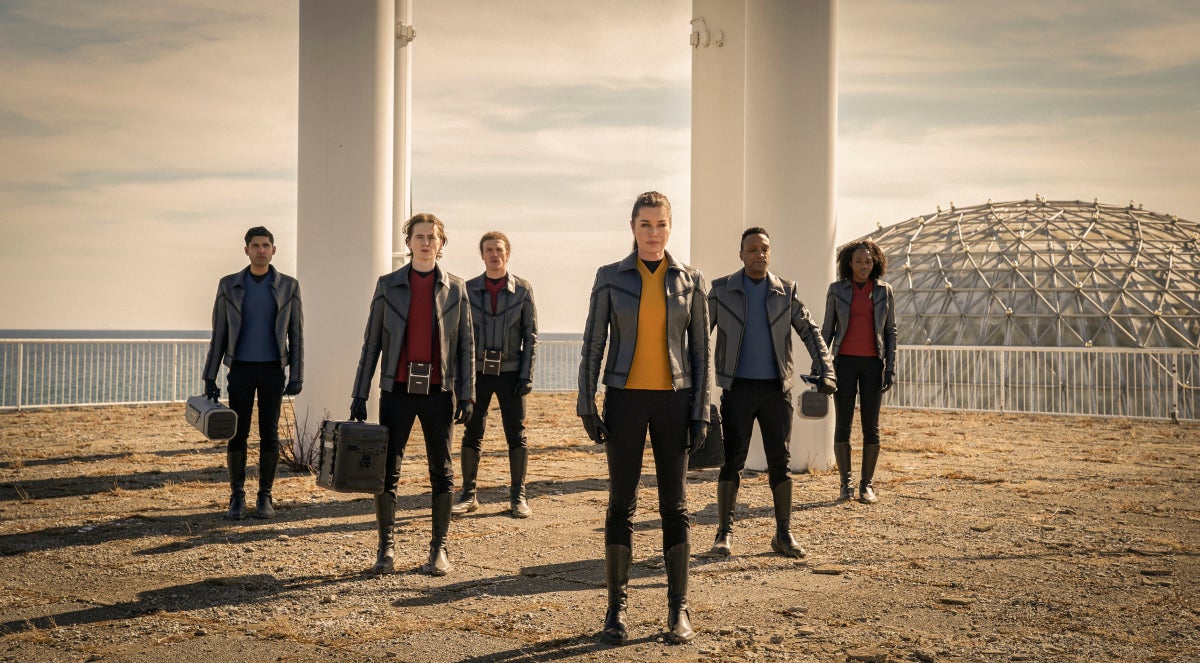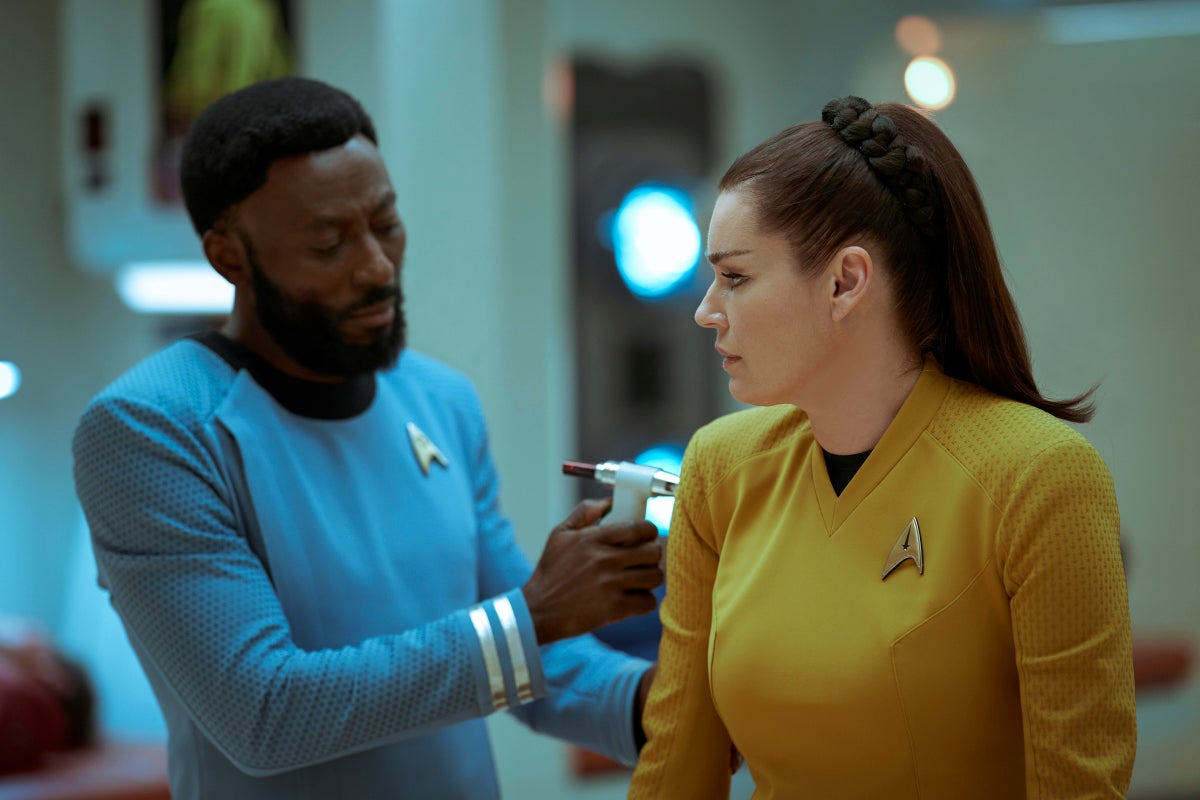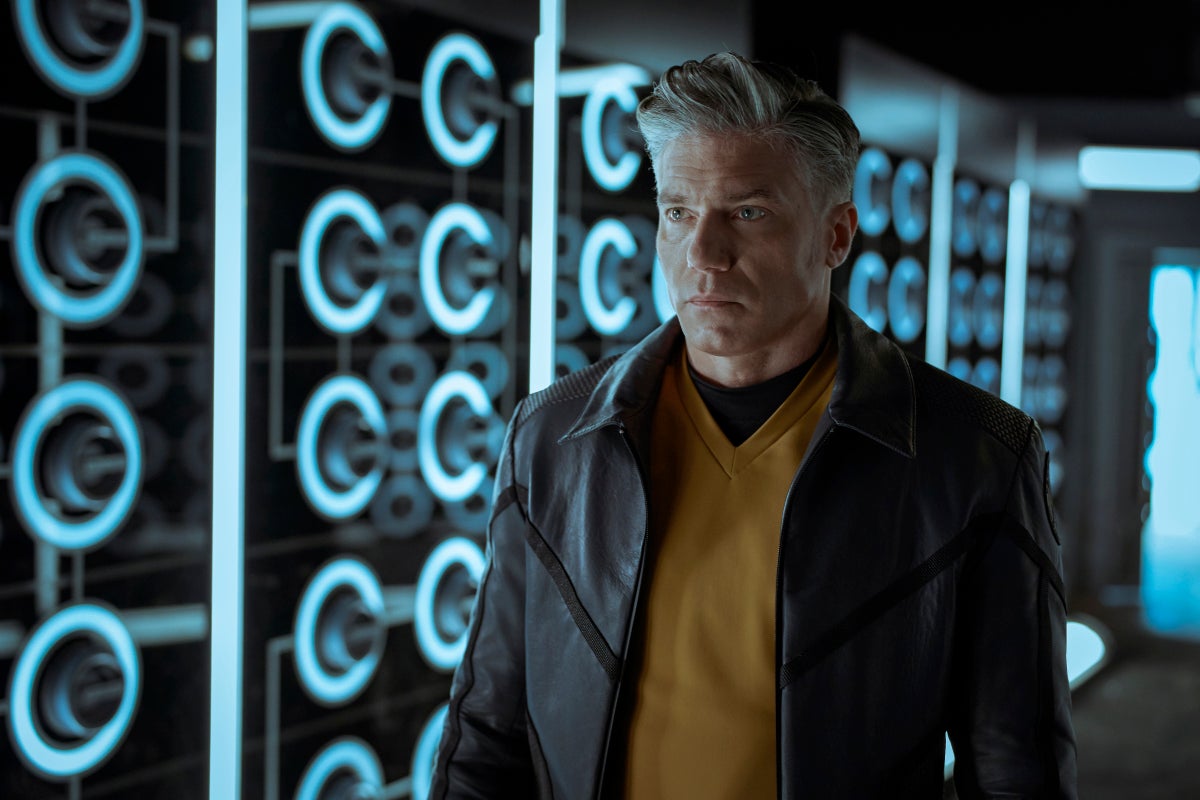Three weeks in and Star Trek: Strange New Worlds is already settling into a satisfying groove: one part riff on a formula that Star Trek loves, one part focus on a singular character, one part classic morality tale. This week, you get bang for your buck with not one, but two formula riffs — and a whole lot more in a fascinating look at Rebecca Romijn’s Una Chin-Riley, better known as Number One.

Number One is sort of famous for being an unknown — after all, she existed in Trek’s first pilot, and then vanished off the screen for generations until Discovery revived the character for its second season. But it’s not like Star Trek’s apocryphal material hasn’t tried to shine a light on Number One in those many generations off-screen, and now Romijn’s take on the character — headstrong, confident, and supportive to Pike and the crew around her — gets a chance to bridge the gap between the Trek universes that have existed on screen and in books parallel to each other for years. And crucially, it does so in a way that you don’t have to be a diehard Trek for it to resonate, because it layers it into a much more universal morality metaphor along the way. Also: very cool jackets are involved.

Before all that though, what’s “Ghost of Illyria”’s two-for-one package deal on Star Trek scenarios? Well, we’ve got the fan-favourite stranded Away team members when Pike and Spock, investigating a seemingly vanished colony of Illyrians — a minor but important Trek race, having appeared on-screen just once in Enterprise, but evolved a new life in Trek novels as a race of bio-engineered humanoids looked down upon by the Federation for genetic augmentation — after a dangerous encroaching ion storm cuts them off from transport with the rest of the Away team. As the duo investigates what could’ve happened to the Illyrians on Hetmet IX, the officers who do make it back up to the Enterprise suddenly find themselves coming down with a bizarre disease: an addiction to light caused by vitamin D deficiency, a viral effect that lowers an infected person’s inhibitions enough to get them to crave light, no matter how recklessly.
Of course, it doesn’t take long for the virus to spread all over the Enterprise, and things get a bit “Macrocosm” with a dash of “The Naked Time,” as a seemingly unaffected Number One finds herself one of the sole people remaining on the ship who can function. But there’s more to it than that, as Strange New Worlds layers many little side-threads into the central mystery of the episode as things go from bad to worse on the ship. On the ground, Pike and Spock encounter mysterious energy spirits that start trying to assail the one safe place they’ve managed to seek shelter in from the storm. On the ship, Number One finds that she’s not the only one hiding secrets about how she’s safe from the disease when it becomes clear that there’s something private about Dr. M’Benga that might have played a part in causing whatever infection is spreading through the ship. Throw in the occasional attempts by an inhibited Chief Engineer Hemmer and Security Chief La’an almost destroying the ship by trying to open up incredibly dangerous sources of light (a beamed-in segment of the planet’s mantle and a warp core breach, respectively), and it almost seems like there’s a bit too much going on.

It all begins to dovetail together rather elegantly though with the big twist: Una was affected by the light virus, but her body created anti-bodies for it naturally because she herself is an Illyrian — a canonical acknowledgment of explorations made in novels like “Vulcan’s Glory” and “Child of Two Worlds” decades and decades ago that fleshed out Number One’s unseen backstory. As Pike and Spock find out the colonists on Hetmet IX inadvertently succumbed to the disease trying to reverse their Illyrian augmentation to join the Federation — which of course, bans genetic augmentation thanks to a little fella named Khan Noonien-Singh — Number One takes the steps to reveal herself as an Illyrian too, having lied about her origins to join Starfleet. From there, “Ghosts of Illyria” becomes even more of a classic morality tale, and about reminding us that even a flagship like the Enterprise is staffed by imperfect beings, human or otherwise.
Each person aboard the ship has made sacrifices or fudged rules because of something they care about, or someone they love, to make up for traumas and prejudices of the past. As La’an, herself from a background of bullying due to her familial legacy with Khan, screams at Una — inhibited by the virus or otherwise — that she’s a monster, and then has to confront and reconcile with her friend for Una’s obfuscation about her past, we get to see the two briefly confront the prejudices placed on them by the Federation that pushed both of them to desperate measures. When it’s revealed the reason the virus got from Hetmet to the ship because M’Benga hasn’t updated his medical transporter — because he’s hiding his terminally ill daughter perpetually in its pattern buffer — you see the heartbreak on his face when he asks Una why he, the chief doctor aboard the most advanced ship in Starfleet, can’t do something as simple as save his daughter’s life. And even, perhaps most darkly and most fascinatingly of all, when Una goes to resign her position having broken multiple Federation rules and Pike refuses to accept, she privately reflects if her captain and friend would still do that if she wasn’t “one of the good ones” when it comes to her mistrusted species.

It’s a fascinating acknowledgment of an idea that Star Trek loves. And it’s one that its modern iteration perhaps loves most of all — especially Discovery, where it’s been something of an obsession of late. It’s the idea that not only are the elite beings of utopias like the Federation not all perfect, they’d be better off not trying to maintain that illusion of enlightened perfection. If they could just sit down and talk to each other, they could find acceptance and humility in that openness. If M’Benga was honest about his daughter, the Enterprise crew could’ve helped him and avoided a viral crisis in the first place. If Una was open about her Illyrian heritage, then maybe the Federation and Starfleet’s prejudice against her people thanks to the traumas of humanity’s past would be slowly corrected, to the point that she doesn’t have to worry if the only reason she’s getting a pass is that she’s proven herself to her colleagues.
The blessing and curse of Strange New Worlds’ love of the episode format classic Star Trek was built on means that it’s unknown whether or not how much any of this will be brought up again. Could we see a plot about Illyrians being accepted into the Federation, in spite of its rules against genetic modification? How much of M’Benga’s daughter is in the show’s future, or even Una’s lingering doubts about the privilege of being the “accepted” member of her species? These are fascinating ideas and thoughts that Strange New Worlds throws up in the moment, bit it’ll be a shame if they’re left untouched as the show goes on to chase new riffs and other ideas. But the fact that it’s willing to dive into them so immediately is at least a promising sign that, should the show one day begin to evolve its episodic storytelling, it has the capability to follow up on some fascinating threads with these characters already.
Want more Gizmodo news? Check out when to expect the latest Marvel and Star Wars releases, what’s next for the DC Universe on film and TV, and everything you need to know about House of the Dragon and Lord of the Rings: The Rings of Power.
Editor’s Note: Release dates within this article are based in the U.S., but will be updated with local Australian dates as soon as we know more.
